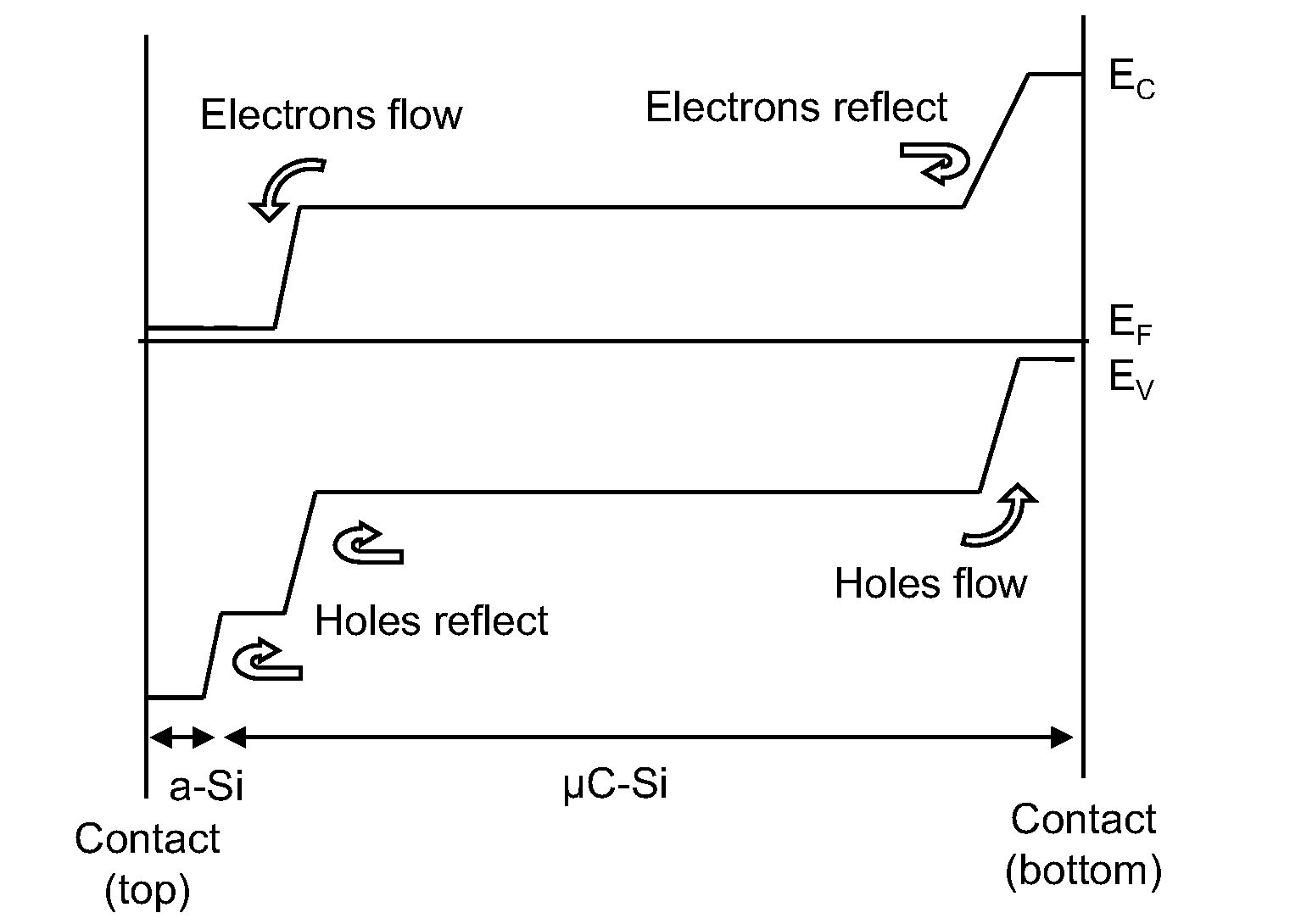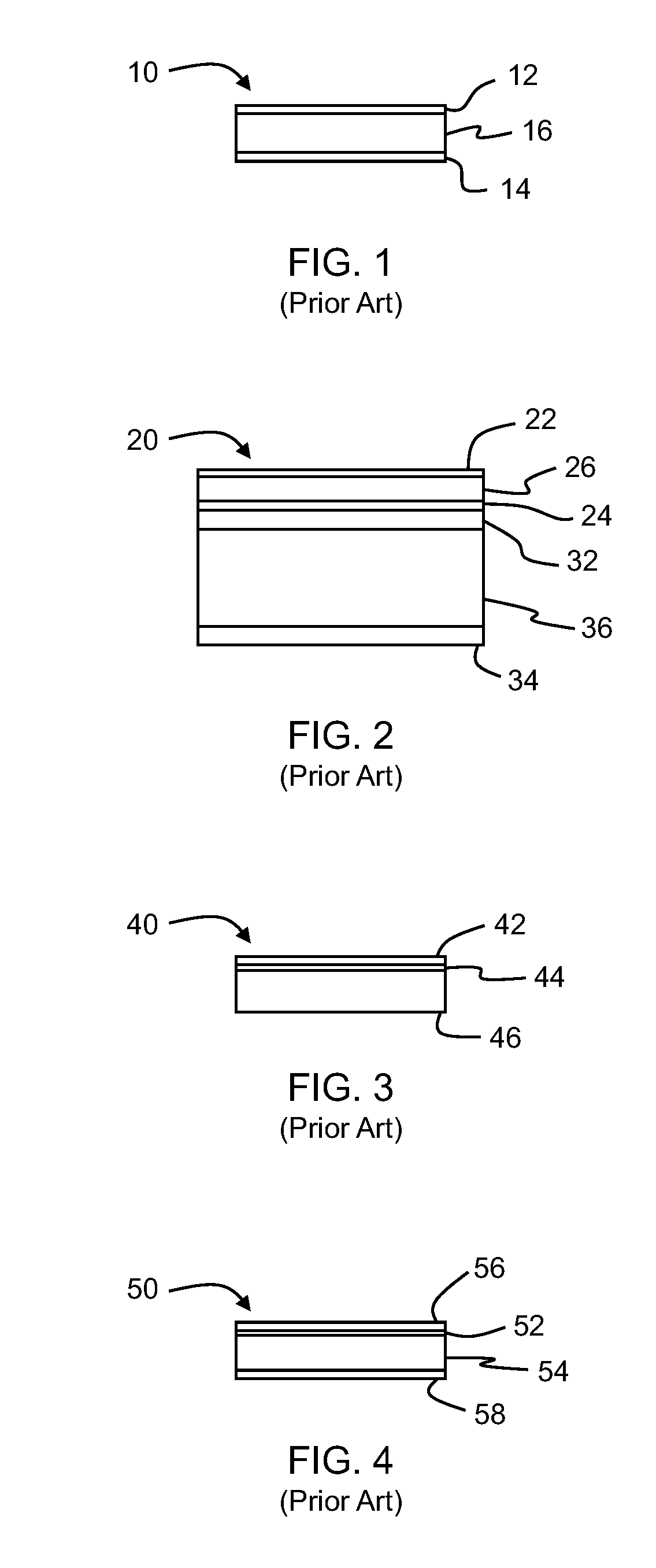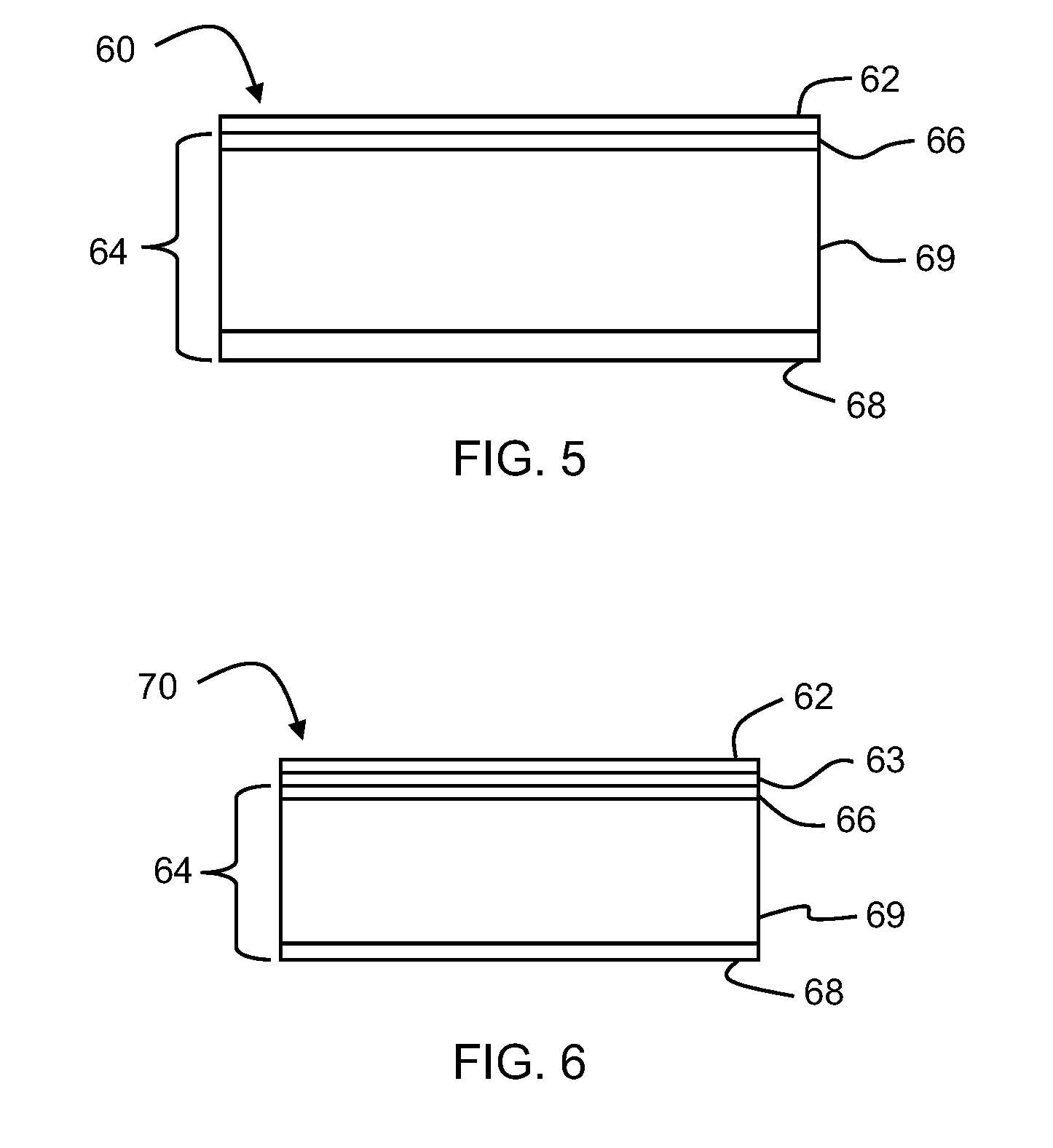Thin Film Silicon Solar Cell Device With Amorphous Window Layer
a solar cell and thin film technology, applied in the field of thin film silicon solar cell devices with amorphous window layers, can solve the problems of 15-20% loss of starting efficiency
- Summary
- Abstract
- Description
- Claims
- Application Information
AI Technical Summary
Benefits of technology
Problems solved by technology
Method used
Image
Examples
Embodiment Construction
[0024]Embodiments of the invention generally provide photovoltaic devices and methods of forming and treating photovoltaic devices. Before describing several exemplary embodiments of the invention, it is to be understood that the invention is not limited to the details of construction or process steps set forth in the following description. The invention is capable of other embodiments and of being practiced or being carried out in various ways.
[0025]According to one embodiment of the invention, a photovoltaic device 60 comprises a layer of amorphous silicon (“a-Si”) 62 formed over a μC-Si solar cell 64, as shown in FIG. 5. In one embodiment, the a-Si is substantially pure. In other embodiments, the μC-Si 68 is doped to a first conductivity type and the a-Si layer 62 may be doped to the opposite conductivity type of the μC-Si (i.e., the same type as the emitter of the μC-Si cell) as is shown in FIG. 5. As shown in FIG. 5, the μC-Si solar cell 64 comprises an optional first micro-cry...
PUM
| Property | Measurement | Unit |
|---|---|---|
| thickness | aaaaa | aaaaa |
| conductivity type | aaaaa | aaaaa |
| conductivity | aaaaa | aaaaa |
Abstract
Description
Claims
Application Information
 Login to View More
Login to View More - R&D
- Intellectual Property
- Life Sciences
- Materials
- Tech Scout
- Unparalleled Data Quality
- Higher Quality Content
- 60% Fewer Hallucinations
Browse by: Latest US Patents, China's latest patents, Technical Efficacy Thesaurus, Application Domain, Technology Topic, Popular Technical Reports.
© 2025 PatSnap. All rights reserved.Legal|Privacy policy|Modern Slavery Act Transparency Statement|Sitemap|About US| Contact US: help@patsnap.com



